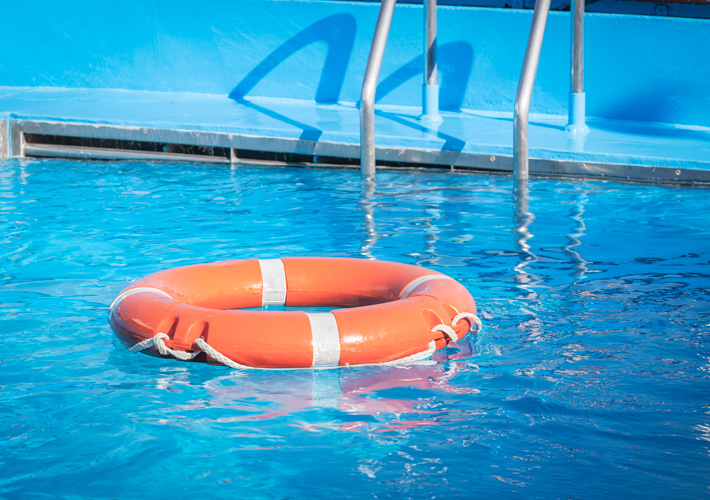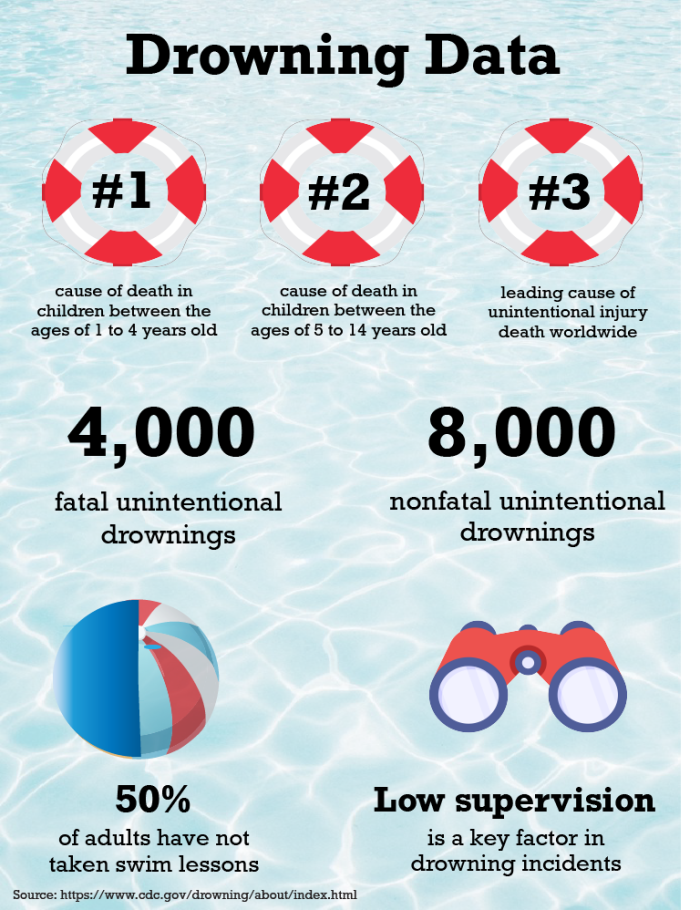
Pool Drowning Detection Standards – Floating to the Forefront
Twenty seconds is a little less than the amount of time it took Australia’s Cameron McEvoy to win gold in the men’s 50-meter freestyle swimming event at the 2024 Paris Olympics. During McEvoy’s swim, the global audience was keenly focused on what was happening on the water’s surface.
Twenty seconds is also the amount of time is takes for a child to drown, illustrating the importance of what can happen below the surface.
Each year, unintentional drowning kills approximately 236,000 people worldwide according to the World Health Organization – more than seven times the seating capacity of the Paris Olympics’ Aquatics Centre.
With more than 10 million swimming pools in the United States alone, access to these summer cool-down oases is easy. Yet according to the Red Cross, only 56% of Americans can perform the five basic skills required for safe swimming. Globally, a Gallup survey reports the number of people who can swim drops to 44%.

While supervision and a keen eye on everyone in the pool is the best protection from drowning, enhanced pool alarms and drowning detection systems are tools that can help reduce the number of deaths and injuries caused by drowning.
New standards from the committee on consumer products (F15) are helping with this effort.
Read more: Standards Aim for Safer Umbrellas, Safer Beaches
Investing in Safety
Pool alarms, while not as advanced as some drowning detection systems, add a level of security for pool areas with an average cost of $180. Four types of pool alarms contribute to a safer pool area and swimming experience: surface; subsurface; threshold; and wearable alarms.
For greater protection, drowning detection systems and alarms offer a variety of methods to help reduce the number of drownings. Many of these systems are under development and are more expensive to incorporate, especially image-processing systems. One such technology is computer-vision drowning detection that assists in scanning – but not replacing supervising – pool areas through cameras that are immersed in the water or looking over the pool to detect potential drowning signals.
Some methods of drowning prevention include:
- Lifeguards – Able to make well-informed decisions and judgment calls; humans can quickly rescue based on what they see.
- Wearable sensors – Offer more opportunities to customize thresholds and collect data constantly to monitor the area; can be more accurate due to their ability to easily pair with artificial intelligence; and can be less expensive and more available than other options, which is especially helpful considering most drownings occur in middle to lower income countries.
- Video-processing drones – Able to capture a wider visual that contributes to a constant video feed that aids in detecting drowning signals quickly.
- Image-processing technology – Provides constant monitoring and video feed, as well as being able to detect underwater drowning with enhanced and accurate recognition of various drowning behaviors that can be customized by thresholds.
Image-processing technology may offer the greatest protection from drowning because of its ability to capture accurate images and detect drowning signals better than other methods. However, the price of these systems is higher than other methods, and accessibility to the AI infrastructure incorporated into the system may not be available to all users.
Read more: Going for Gold: Standards for a Safer Olympic Games
Standards Contribute to Safer Swimming
While no system offers 100% protection from drowning, ASTM International’s subcommittee on pool safety standards (F15.49) devotes its time and attention to developing guidelines and specifications aimed at decreasing the number of pool-related accidents.
“According to the NDPA [National Drowning Prevention Alliance], 88% of child drownings occur with at least one adult present, and 50% of children drown within 25 yards of a parent or other adult,” says subcommittee member Tamar Avraham. “This shows the significant need for protection when the pool is active, and not just barriers to the pool.”
F15.49 has developed three standards with the goal of making pool areas safer:
- Standard safety specification for residential pool alarms (F2208) – This standard helps to ensure safety and performance quality for pool alarm systems that provide rapid and automatic detection of a person one year or older unintentionally falling into swimming pools.
- Standard design and performance specification for removable mesh fencing for swimming pools, hot tubs, and spas (F2286) – This standard details the quality, design, and performance of the removable mesh safety barrier used to lower the number of deaths or injuries, especially among those individuals five years old or younger, in swimming pools, hot tubs, and spas.
- Standard specification for computer-vision drowning detection systems for residential swimming pools (F3698) – This standard provides specifications for performance requirements for drowning detection systems in residential swimming pools by detecting potential drowning conditions, such as low visibility – or looking for signals of drowning behavior.
Listen: Safety, from Youth Sports to the Olympics
Supporting Life-Saving Processes
Evolving technologies such as computer-vision drowning detection systems are some of the first of their kind to be used in residential swimming pools and could revolutionize pool safety. While pool alarms and drowning detection systems such as those outlined in the standards here offer enhanced pool safety, they are not intended to replace standard pool safety practices such as fences – and constant supervision.
Twenty seconds. In the grand scheme it is the blink of the eye. Yet 20 seconds in a swimming pool can be critical.
Regan Daley is a communications intern with ASTM International.
 SN Home
SN Home Archive
Archive Advertisers
Advertisers Masthead
Masthead RateCard
RateCard Subscribe
Subscribe Email Editor
Email Editor